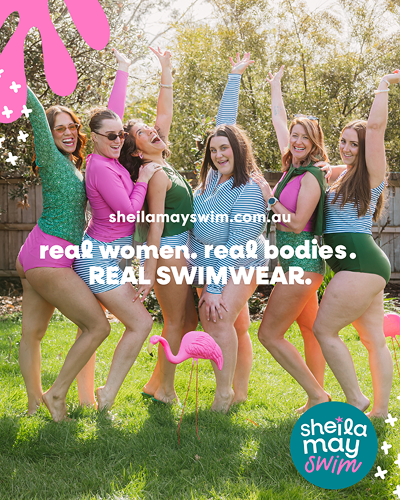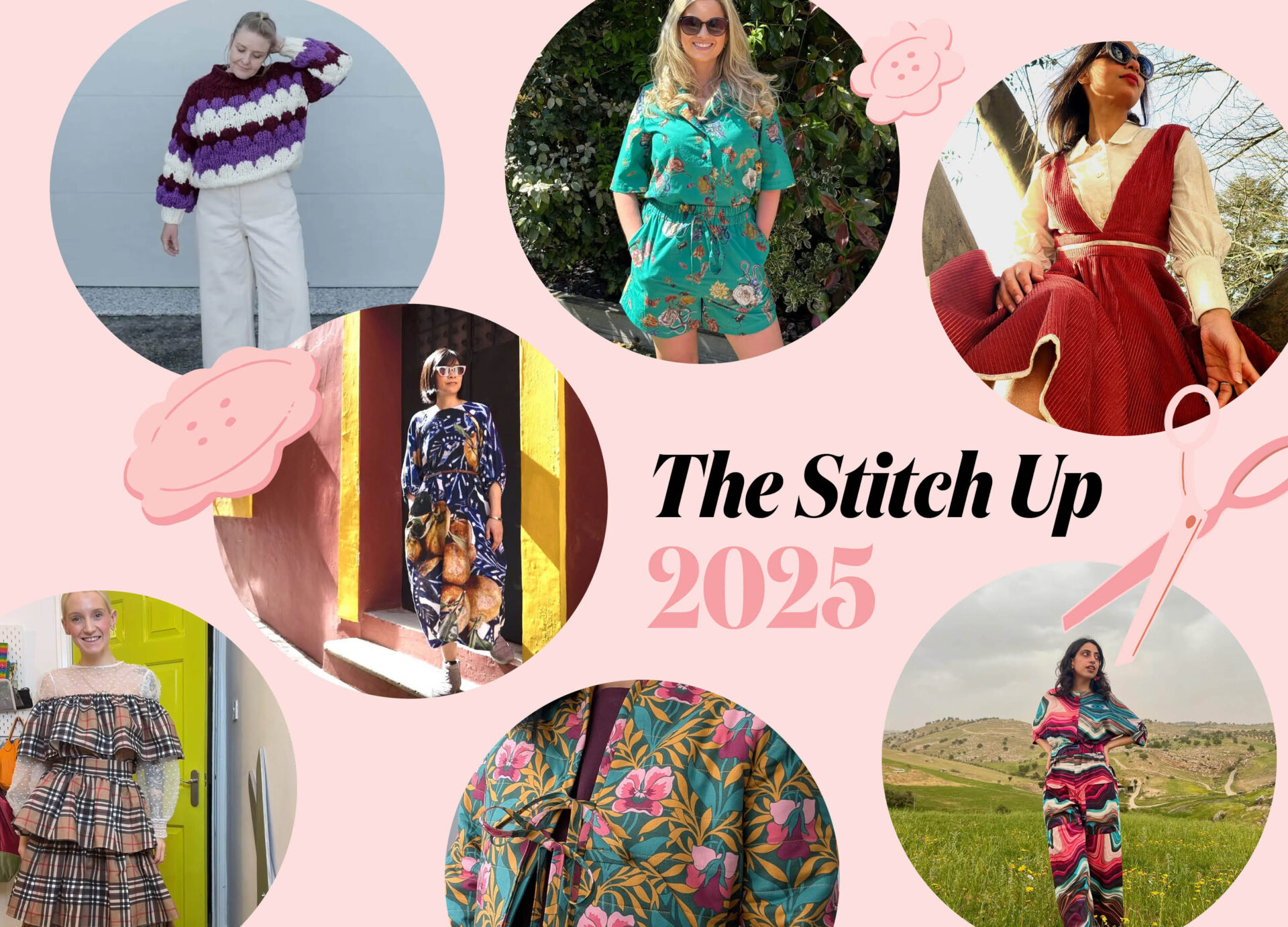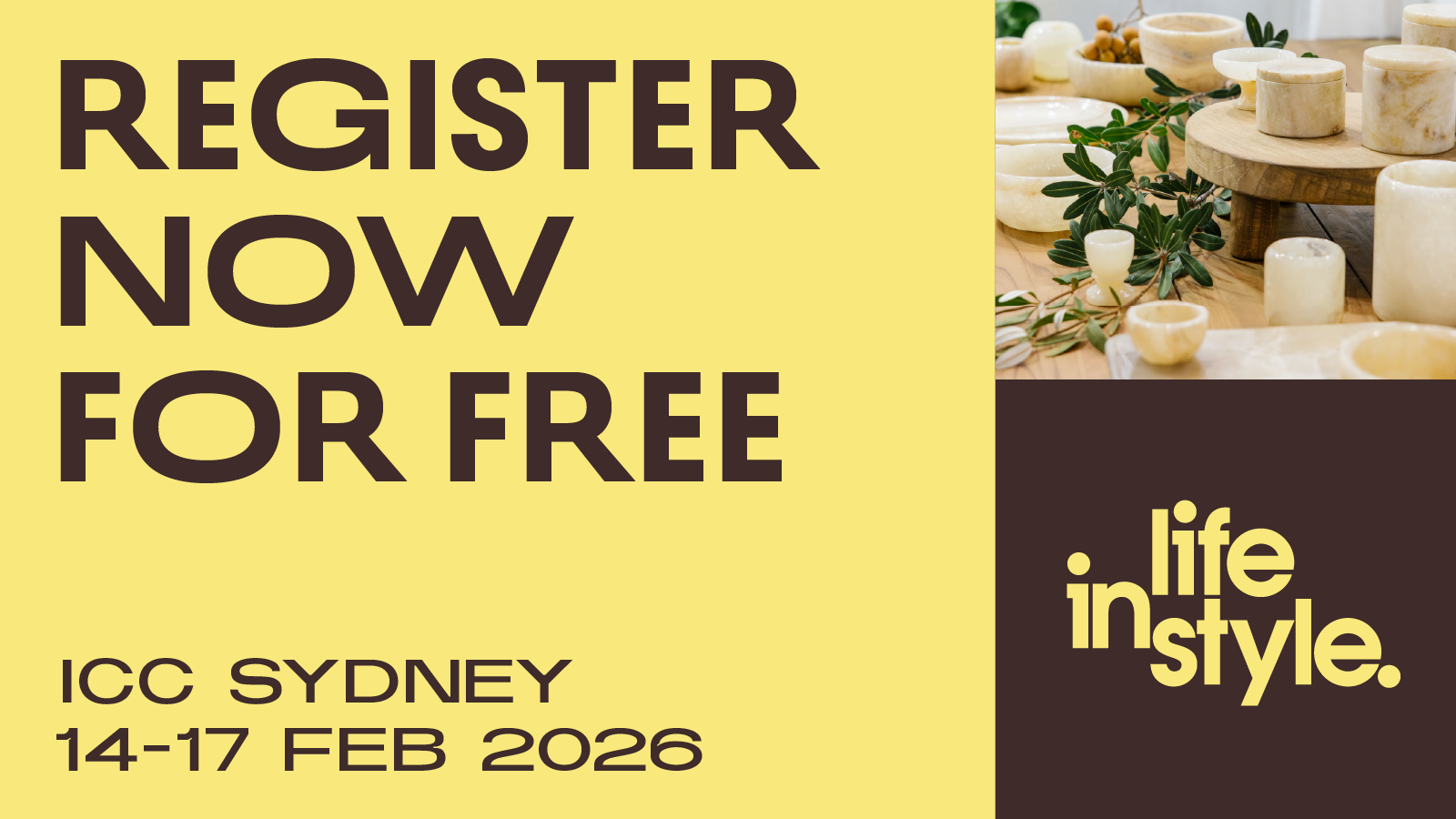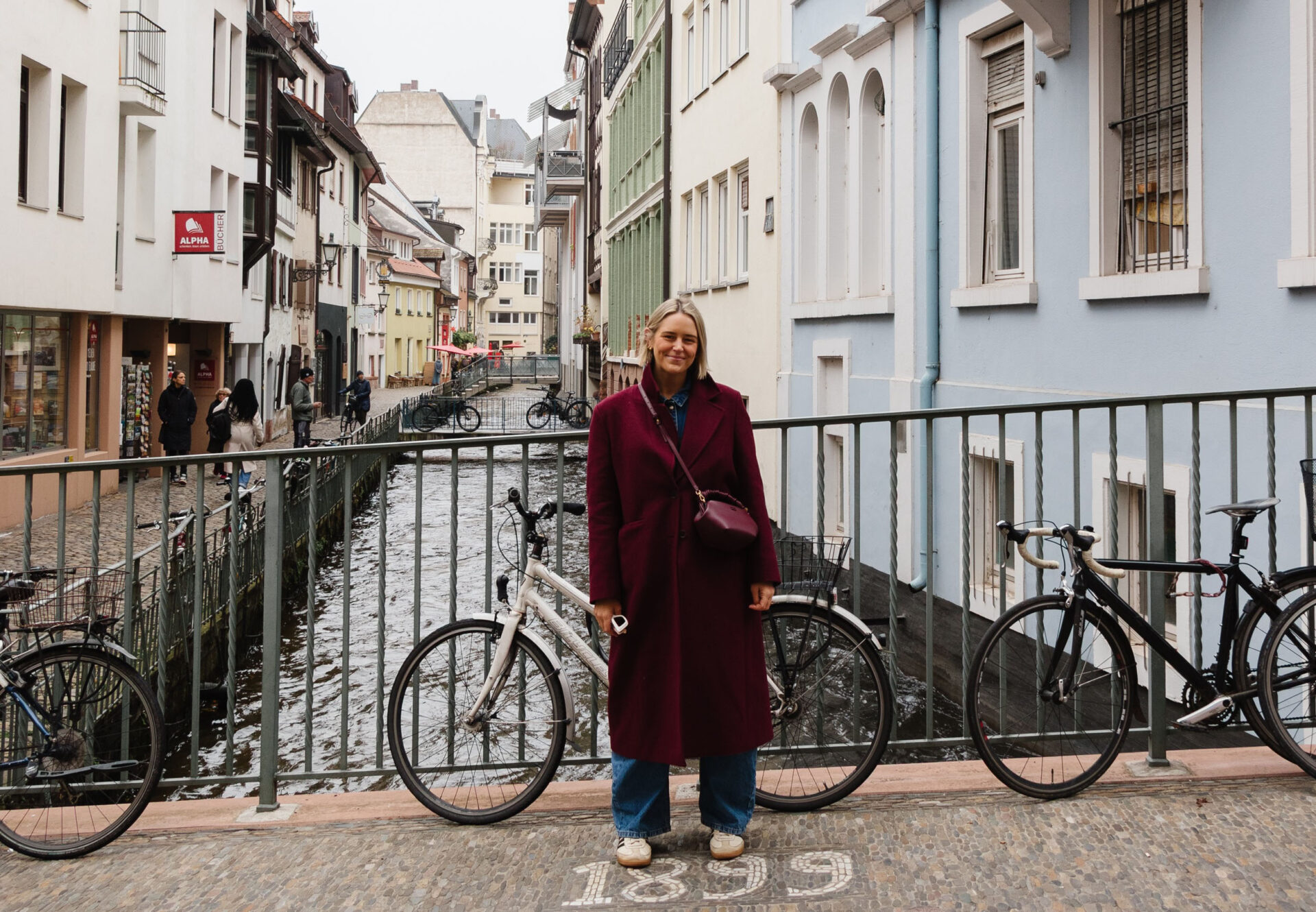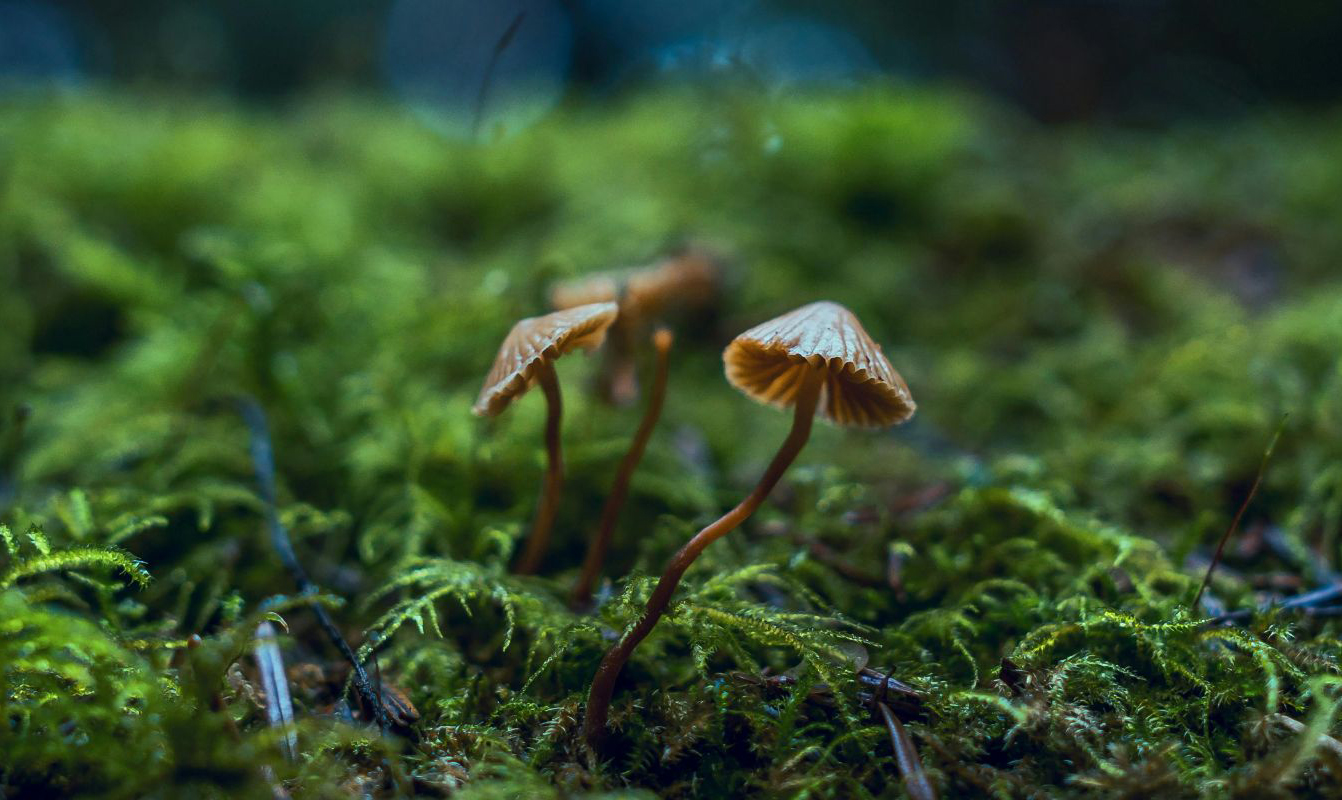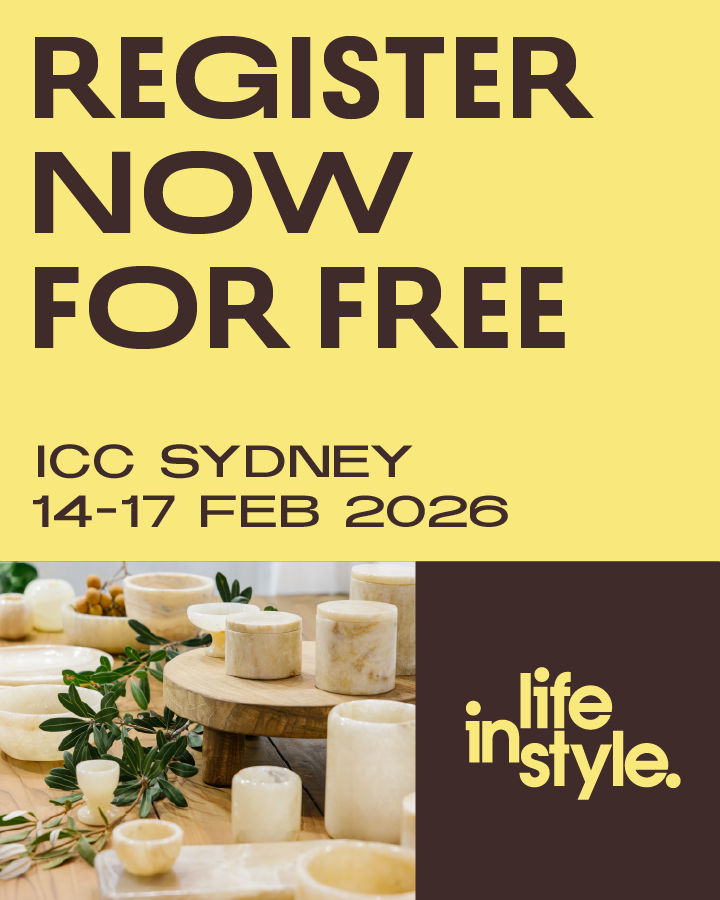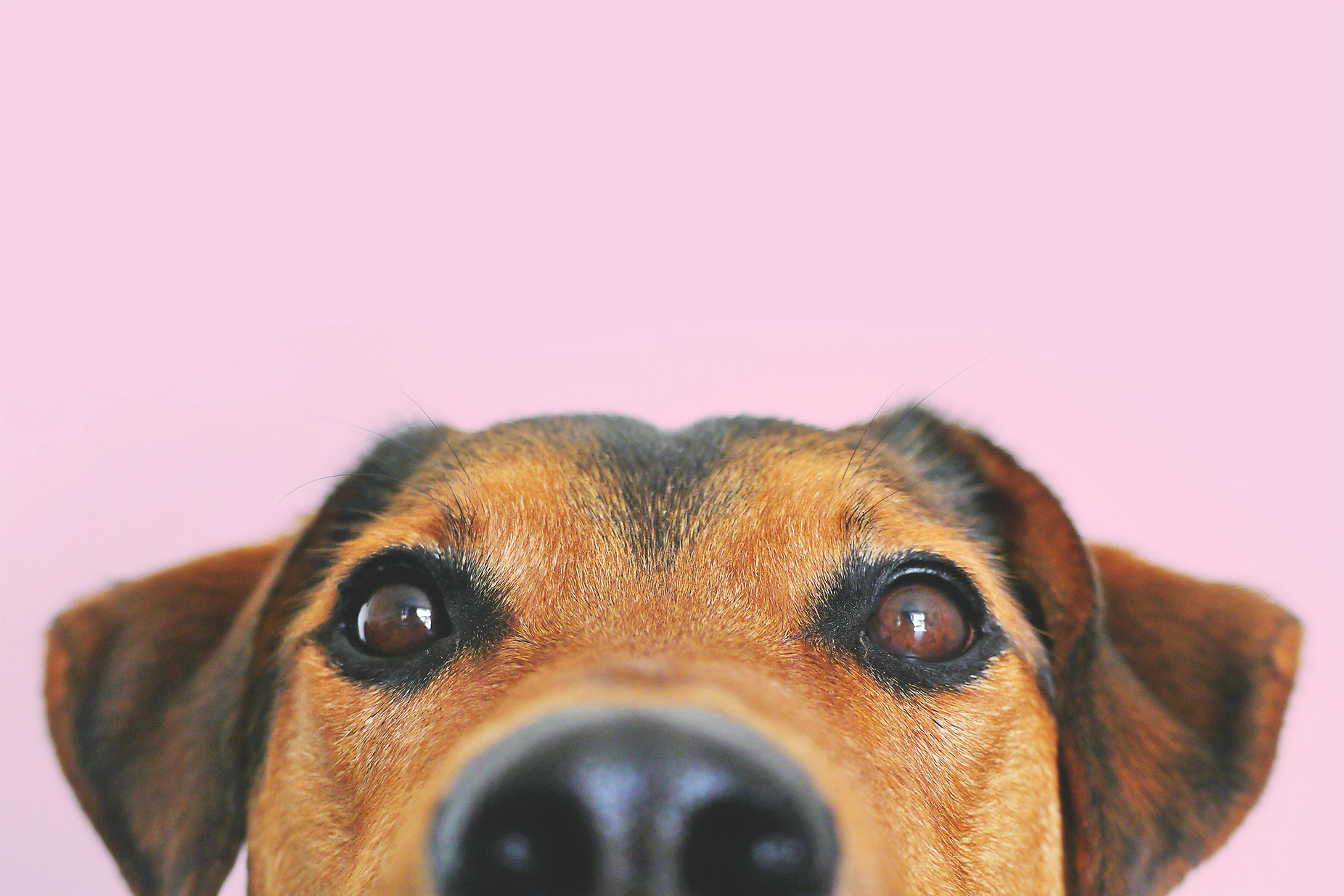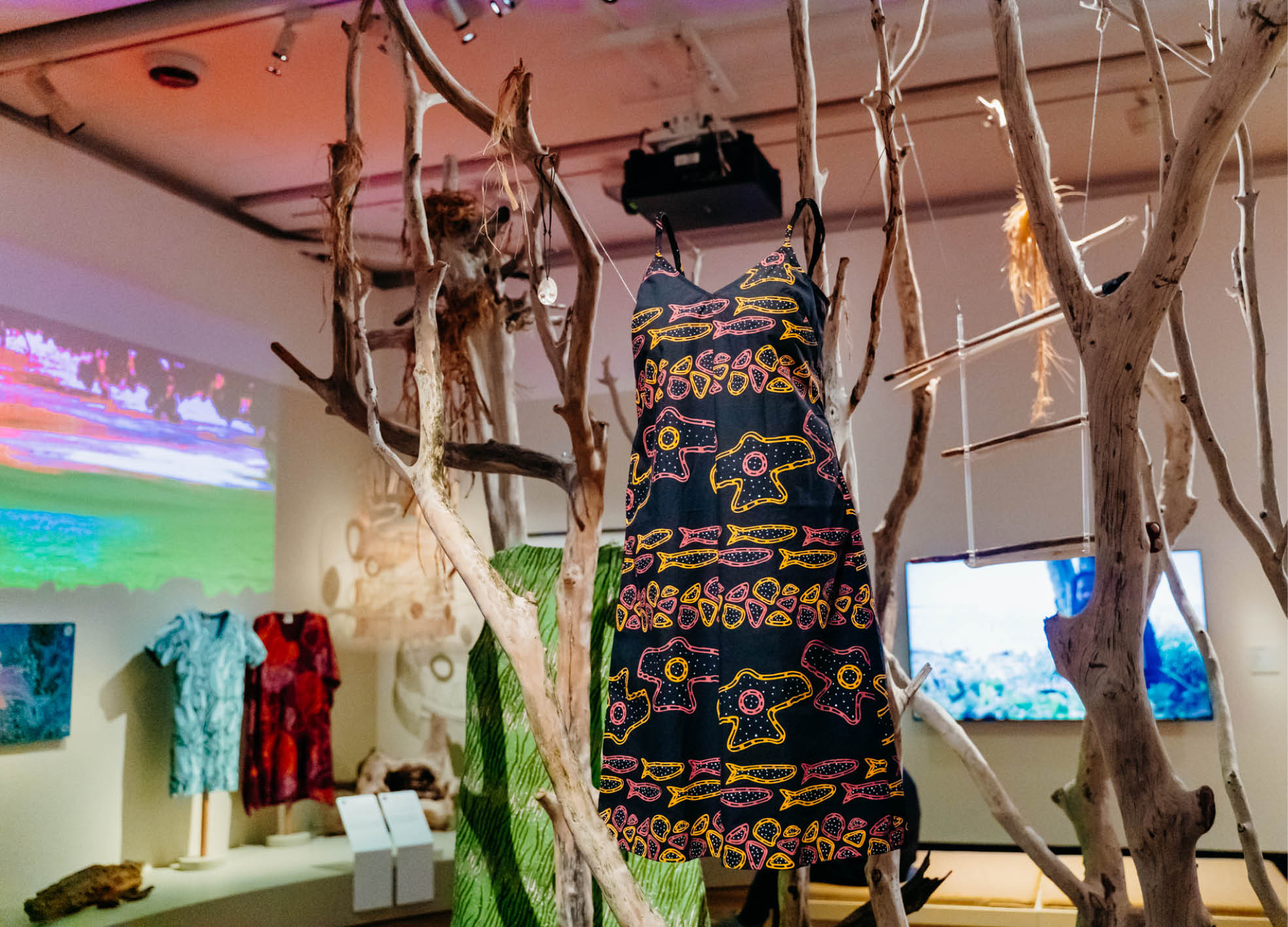Nice Rack! Karishma Kasabia Felt Unseen by the Fashion World… So She Started Her Own Label
- Words by Peppermint
At the risk of stating the obvious, the clothes we wear matter. And not just in the sense of sartorial splendour and self-expression, but for those across the supply chain and beyond working towards a more sustainable fashion future. To celebrate these creatives putting people and planet first, we’ve introduced a new digital series called Nice Rack! (…get it) so we can go behind the seams with some of our favourite sustainable brands, together.
The brainchild of pasta enthusiast Karishma Kasabia, Melbourne-based Khòlò the Label dishes up a solid helping of showstopping prints, comfortable-as fabric and sizing from 6–26, all made in Sedex-approved factories. Karishma’s ethos and joyous outlook permeate across all things Khòlò and her most recent collab with Emily Green cements the brand firmly in our hearts.
photos of karishma and emily PHOEBE POWELL
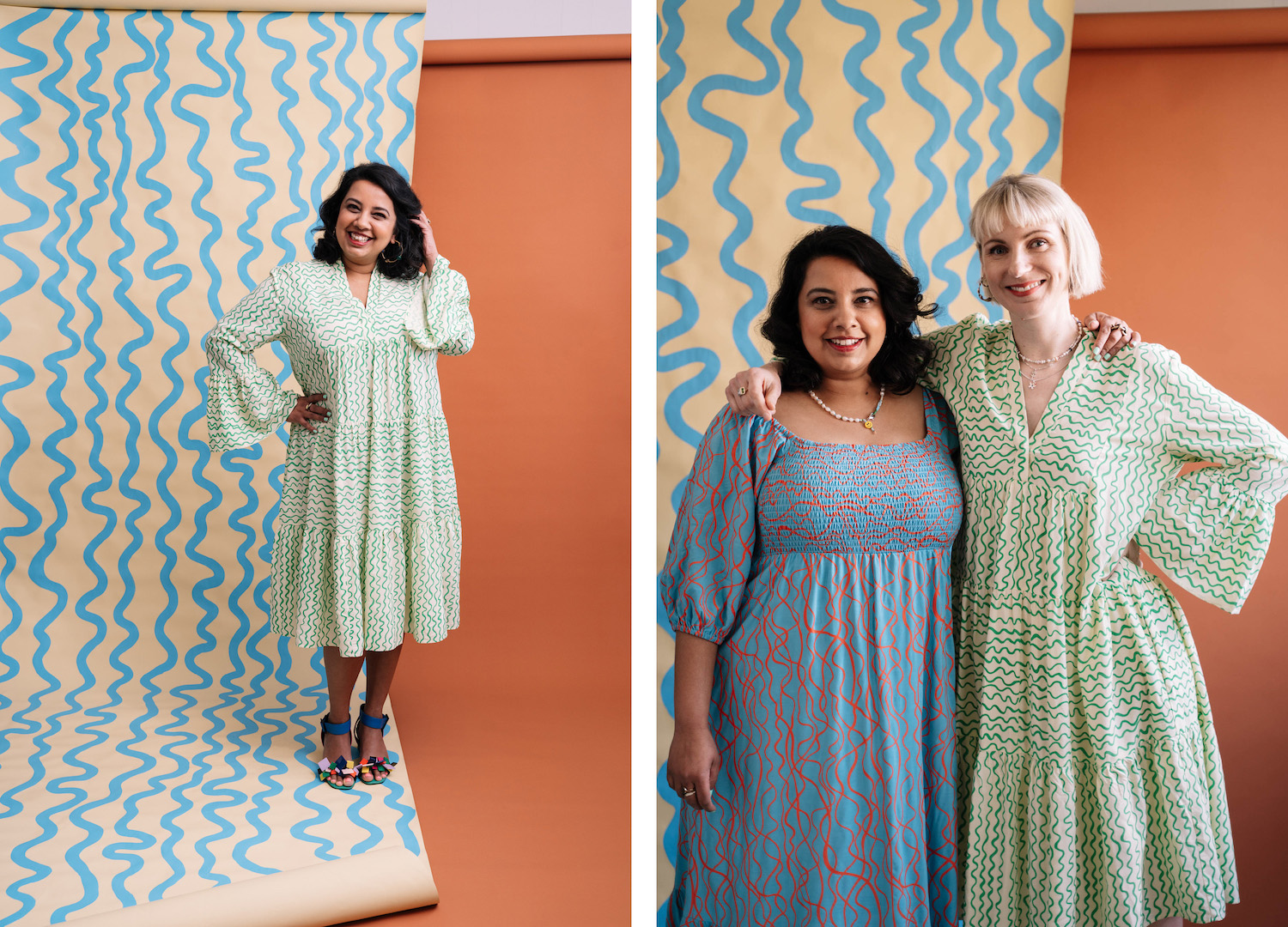
Tell us about yourself…
I’m Karishma Kasabia. A total goody two shoes who is kooky and would like to do wild things like get a tattoo… I’m born into a business family, but I think my mum and I are total artists who haven’t really unleashed enough of our creative selves. There is this wonderful collision of art and business inside me. I’m an oversharer, especially on social media, but oddly quite private when it comes to the big stuff. A friend once said to me, “You can be really open and really guarded at the same time.” I think she nailed it.
I’m a size 16, brown-skinned Indian woman in Melbourne in 2022 who’s just realised she’s kinda beautiful. Sounds crazy, but it took me until my late thirties to really see myself in that light. It’s really lovely to follow like-minded people on the ‘gram. As much as people say social media is bad for you, if you have a great “shit filter”, it can be the best source of content out there.
I carry a keen awareness of my skin. I’ve often been the only Indian in the room and we were brought up so differently. Even now, I open my friend’s cupboards just to see what ingredients they have and watch to see who clears the table after dinner. It’s subtle but I grew up in a bubble and lately I feel like that bubble hasn’t just burst… it no longer exists.
I’m a size 16, brown-skinned Indian woman in Melbourne in 2022 who’s just realised she’s kinda beautiful.
What does sustainable fashion mean to you?
I learned very quickly that nothing is ever entirely sustainable. Cotton needs a lot of water in production. If garments don’t have stretch where we want them to, we’re less likely to wear them (stretch is obtained in the less natural things… think spandex). For beading to last longer, it’s ideal to use nylon or hard-wearing fabrics, not natural ones (unless you’re in India and you’re able to repurpose it). What I’ve learned over time is – much like parenting – we do the best we can, with the knowledge we have at the time.
To me sustainable fashion means producing garments that wearers make immense use of – and if they’re for a special occasion, how well can they be passed on from wearer to wearer – and to find ways of doing this while causing the least damage to the planet as possible.
READ MORE: Nice Rack! In the Swim with First Nations Designer Liandra Gaykamangu
When did you know you wanted to get into fashion?
I don’t think I ever really knew per se. It just started and then it kept on going. I had tried photography, writing and resin art in my baby-mumma hiatus but nothing stuck. When my son Aru was born, I stopped designing for clients (I used to run a design agency back in the day) and I wanted to design for “me”. With the hopes that what I designed would be appreciated and purchased.
Then I realised, there wasn’t enough fashion for ALL of us – choices that someone in a size 10 could make were unavailable to someone in a size 20. I couldn’t even wear my own first collection – WHAAATTT? Beading was for brands that were well out of my price range and don’t even get me started on sizing. There just weren’t enough options for us and fashion felt like a snobby industry that I couldn’t belong. I felt so unseen.
I rebelled. Our shoots have smiley faces because I wanted to feel invited, not looked down on. Our models are mixed because I wanted all of us to feel like we were represented. Our content is ALL OF US (buyers and models alike) – because ALL OF US are worthy of making it to a website or a social page. I genuinely believe Khòlò became the change I wanted to see.
Then I realised, there wasn’t enough fashion for ALL of us – choices that someone in a size 10 could make were unavailable to someone in a size 20. I couldn’t even wear my own first collection…
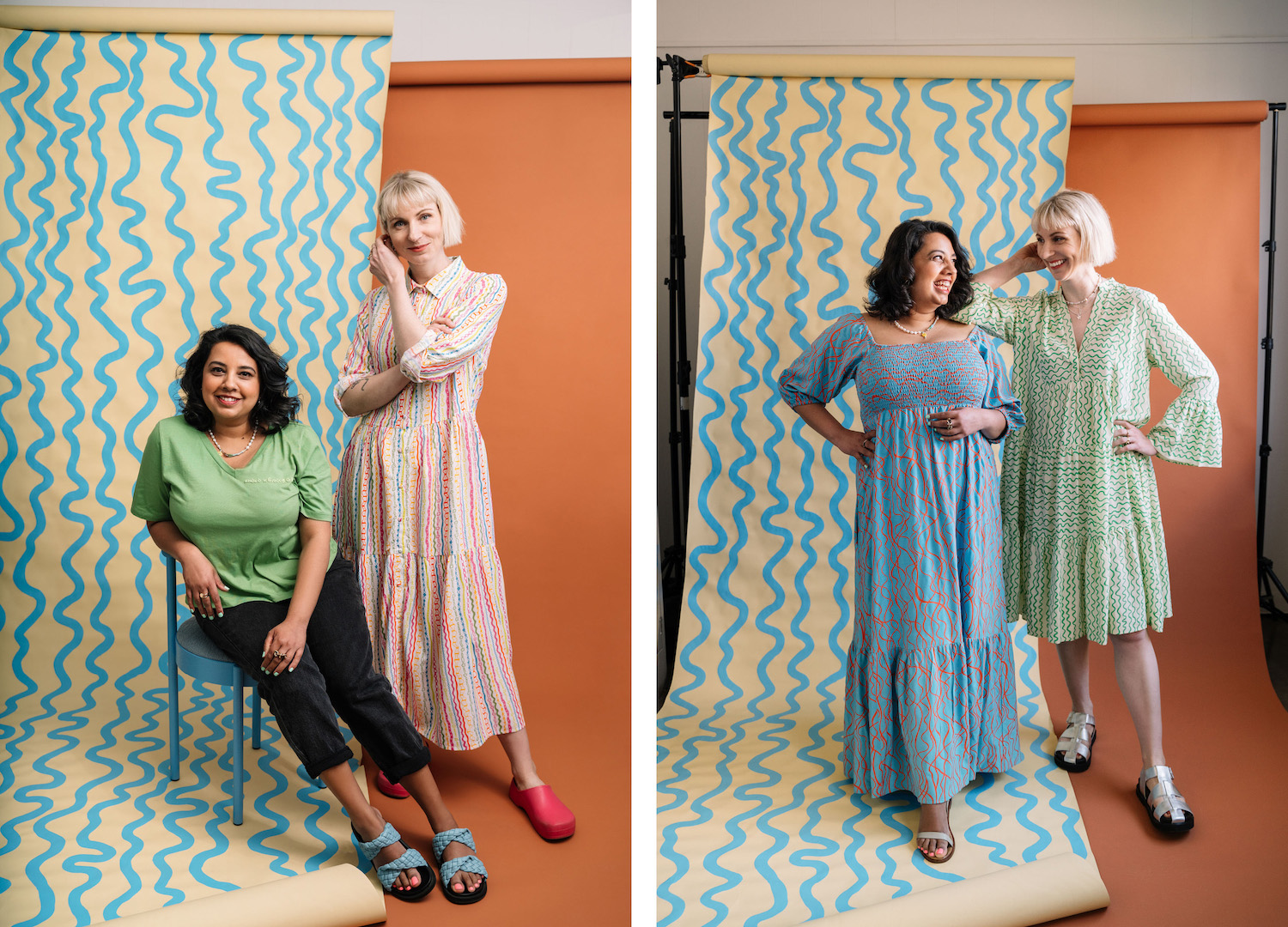
Why were you inspired to start your label and what continues to inspire you as a designer?
I was frustrated and I needed to “design”. My body just needs to make stuff, I can’t explain it. I love the attention we get when people love what we make. I’m a Leo, born for it. I can’t lie about that, a big part of me thrives knowing there are people who “get” it. I get so excited during the process, sourcing fabrics, looking at prints, flipping a Pantone swatch book, opening a box of samples. The feelings of joy are IMMENSE.
I know I don’t have the right words to answer this question – my answer seems so unimaginative like I should be talking about the Renaissance or a period piece on Netflix (I am coincidentally watching The Crown) or run off a list of grand couturiers. But it’s my truth. I’m legit excited by what is in front of me and by my pursuit of it. Making it happen and making it come together and getting to do it all over again is what inspires me.
Making it happen and making it come together and getting to do it all over again is what inspires me.
How did this collab with Emily Green come about?
Em and I have actually collaborated three times now. I’ve always LOVED her work. You know that feeling you get? When you’re like, “Damn that’s good! I wish I was capable of that!”? Often I look at her work and I feel like that.
Her level of confidence with colour and pushing boundaries is extraordinary. Maybe when I approached her, I wanted some of that to rub off on me and I didn’t realise it at the time. I’ve always been a bit restrained and I love how she gives me wings. She probably doesn’t even realise it, but just her believing in me, makes me believe in me. We work well together and if she’ll have me again, I’d do it again with her. I trust her immensely and I know she’ll always do us both right.
How do you incorporate sustainability/ethical practices within your brand?
We work with Sedex and ISO-certified suppliers. I choose fabrics very carefully – if they contain nylon or poly, it’s for stretch or beading (we want that handmade craftsmanship to last lifetimes). Our runs are smaller and limited edition. Our packaging comes from India in biodegradable bags and leaves our warehouse in compostable satchels.
I ask Ankita (my Delhi babe who manages production) to visit the factories. She’ll give me an idea of the vibe and the team. I know this might not be categorised as “ethical” by the rule book but I’ve let go of suppliers because men were sexist or staff were unhappy because they were mistreated by their boss. It all permeates. And ultimately, it’ll permeate the clothes too. This is very woo-woo, but the older I get, the more I believe it.
Tell us about any standout moments in your career…
When Deni featured us on their feed; when we made it into Fashion Week this year; paying myself a wage; when Nina captured our Helena Jumpsuit; when our audience trust me for pre-orders I am in awe; and when people slide into my DMs with selfies and their personal stories. It is an honour to be trusted so much, I don’t take it lightly. I hold it all so close to my heart.
What are your favourite pieces to wear?
Hahaha. What a great question. Currently. I’ve been wearing the Kismet Midi Dress, Macy Dress and Nirvana Blouse in Wisteria. But MY FAVOURITE is going to be this one in a midi length and our Mindy Shift. I don’t have either of them yet! Dang those pre-orders!
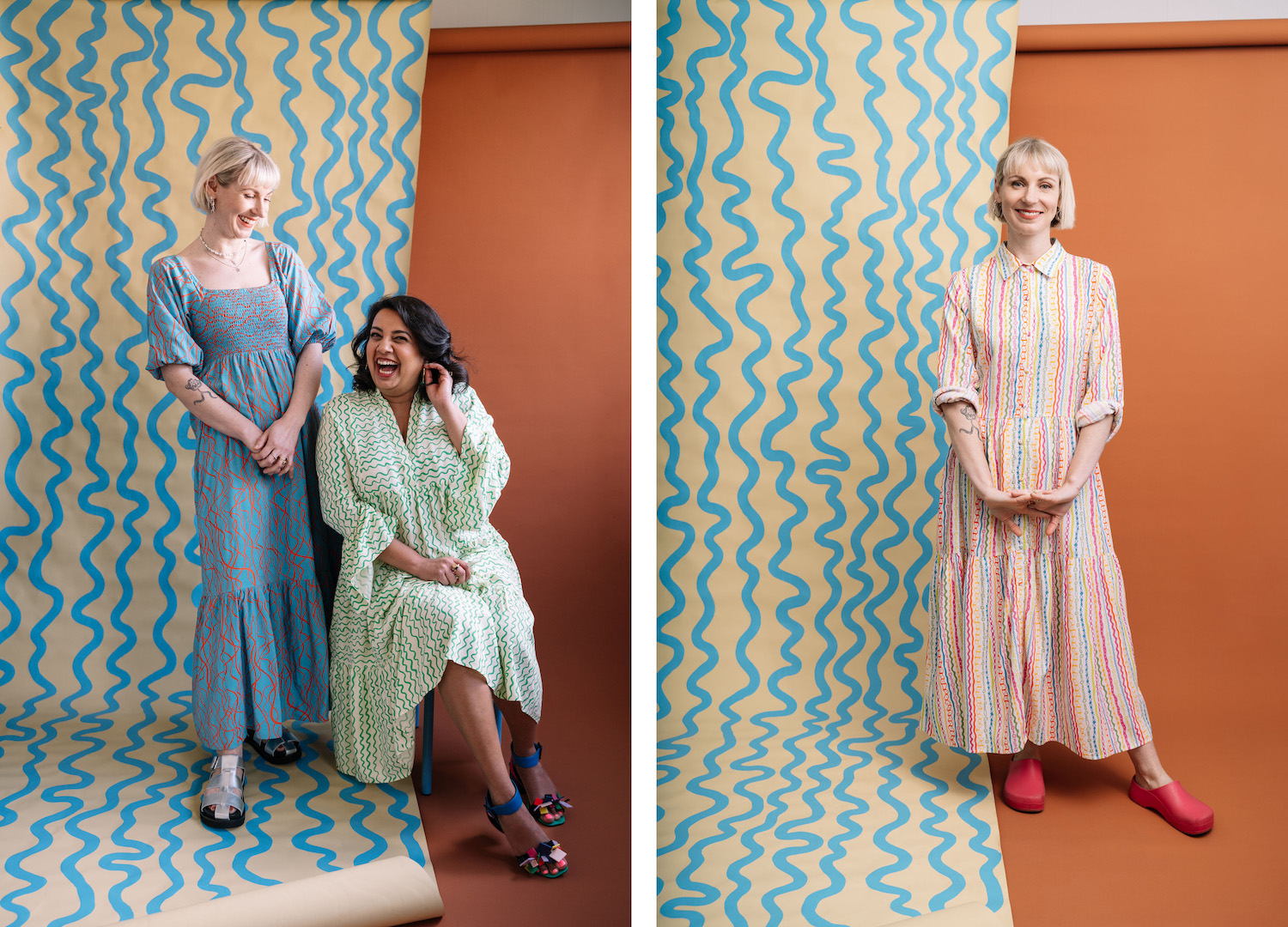
Who are a few of your favourite local designers?
Clothes: Obus, Harlow (for curvy), Ulo Clothing, Megan Park, Variety Hour, Collective Closets.
Accessories: Cecil & Gunn, Emily Green (obvs!).
Homewares and artists: Bonnie Hislop, Jasmine Mansbridge, Voluptuary Ceramics and my friend Marie who really surprises me with where her art takes her and the personal stories she embeds within her pieces.
READ MORE: Nice Rack! A Punk Heart Beats Inside WAH-WAH’s Iconic Knitwear
What do you think needs to change in the Australian fashion landscape?
Wow, what a tricky question… Inclusivity and awareness of our power of influence and how we use it.
A few years ago, I saw a beautiful girl, who was about 15 years old, spend 45 minutes trying to get the perfect selfie. Nothing satisfied her. I realised that something is very wrong.
And that something permeates DEEP in our culture. Across all genders, all races and, dare I say, from a very early age. What we create goes on to become a part of what people absorb. As an industry, we are a large portion of the media. The photoshoots, the social content, the ads, the banners. This media then embeds itself into a person’s subconscious.
As an industry, we can choose to consciously make content that lets people feel seen and accepted in their entirety.
As an industry, we can choose to consciously make content that lets people feel seen and accepted in their entirety: every part of their beautiful bodies, pimples, stretch marks, cellulite and chapped lips. Or we can exclude bodies, skin tones, people of different heights and “imperfections” to sell a farce that really hurts people on a deeper level.
When you realise what misrepresentation did to the younger version of yourself and how messed up your perception of self is, you simply don’t want another person to have to go through the same thing. But who gives themself the time to sit and think about these things? And I guess that is where the awareness bit comes in.
Would it be weird to ask the fashion industry to take a five-minute pause and think about how we’re all feeling about our bodies today? Are we loving ourselves more than we’ve ever loved ourselves? Or are we judging all our imperfections? Because… we need to be the change we wish to see.
Love that I’ve quoted Gandhi to finish this. It’s a full circle.
WANT MORE SUSTAINABLE FASHION CONTENT? RIGHT THIS WAY!
JOIN OUR MAILING LIST
Brighten up your inbox with our not-too-frequent emails featuring Peppermint-related news, events, competitions and more!
explore
More articles
It’s beginning to look a lot like Christmas…. Which means we are officially entering party season. Work parties, friend-dos, family get-togethers and then we’re straight into New Year festivities. If you’re lucky enough, you might be staring down the barrel…
Look, I don’t want to make anyone panic but IT’S DECEMBER!!! If you’re planning to give homemade gifts, you’re going to have to act fast. …
Furred, feathered, fishy, scaled… The pets we choose are as diverse as our personalities. (And apparently, quite often we resemble each other.) But they all…
When you hang a painting on a wall, the story stays put. But when you wear a beautifully made garment that may as well be…
Hang out with us on Instagram
Any New Year’s resolutions on your list? We love this from @OtterBeeStitching - “be brave enough to suck at something new”.
There’s no points for perfection, but you’ll get a trophy for trying. If nothing else this year, take the leap and try something new.
#OtterBeeStitching #Embroidery #BeBrave #TrySomethingNew #EmbroideryArt

Sunday serving suggestion ☀️
Gorgeous photos from @JolieFemmeStore - who make sweet garments from vintage bedsheets.
#PeppermintMagazine #SlowSunday #SwitchOff #Unplug #ReadAMagazine

A toast to the old you 🥂
We wholeheartedly love this post from the brilliant @EmilyOnLife:
“2026: Reinvent, burn it down, let it go (whatever it is). Year of the Snake it up. Exercise your boundaries, exercise your body, take one teeny step every day towards a life that feels better to be in.
But don’t you dare shit on your old self while you do it.
Hold yourself with reverence and tenderness and respect, because you got you this far. You did your very best with the information and tools you had at the time. You scraped yourself together, you made it work, you survived what felt impossible to survive: again and again and again.
You are perpetually in the process of becoming, whether you can feel it or not, whether or not you add it to your 2026 to-do list.“

Some very wise words from @Damon.Gameau to take us into 2026 🙌🏼

⭐️ We made it!!! ⭐️
Happy New Year, friends. To those who smashed their goals and achieved their dreams, and to those who are crawling over the finish line hoping to never speak of this year again (and everyone else in between): we made it. However you got here is enough. Be proud.
It’s been a tough year for many of us in small business, so here’s to a better year in 2026. We’re forever grateful for all your support and are jumping for joy to still be here bringing you creativity, kindness and community.
We’re also excited to be leaping into the NY with our special release sewing pattern – the Waratah Wrap Dress!
How great are our fabulous models: @Melt.Stitches, @KatieMakesADress and @Tricky.Pockets - and also our incredible Sewing Manager @Laura_The_Maker! 🙌🏼
Ok 2026: let’s do this. 💪🏼
#PeppermintWaratahWrapDress #PeppermintPatterns #SewingPattern #MeMade #WrapDress #WrapDressPattern

Putting together our annual Stitch Up brings on all the feels! We feel humbled that you’ve chosen to sew Peppermint patterns, we feel inspired by the versions you’ve created and we feel proud of you.
Where to begin?! As always, there has been a plethora of Peppermint patterns flooding our feeds this year, and we wish we could showcase more than just a handful of magnificent makes from you, our clever community. We encourage you to flip through the me-made items in your wardrobe or scroll through your grid and remind yourself of the beauty you’ve created with your own two hands (and maybe a seam ripper and some choice words). Congratulations to all of us for our creative achievements this year!
We’ve put together some (but absolutely not all) of our favourites from 2025 over on our website. We hope it inspires your next make!
🪡 Link in bio 🪡
Pictured: @FrocksAndFrouFrou @MazzlesMakes @KatieMakesADress @_Marueli_ @IUsedToBeACurtain @Nanalevine.Couture @PiperInFullColour @MadeByMeJessieB @SarahMalkawi @Made.By.Little.Mama
#PeppermintPatterns #SewingPatterns #MeMade #MeMadeEveryday

